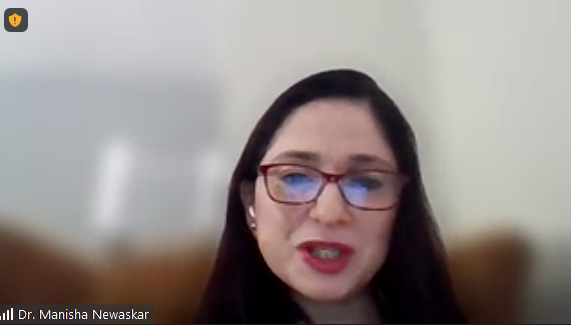While the BA.2 variant gains ground, experts recommend boosting
By: Jenny Manrique
The BA.2 variant now accounts for half of new COVID infections in New York and New England and close to 35% in California and elsewhere. What does this mean for the future? Who’s most at risk? Will a second booster mitigate the impact? What do we do about masks?
Experts convened by Ethnic Media Services at a roundtable news briefing said that compared to Omicron and Delta, the BA.2 is equally virulent and that Latinos are most at risk for infection, hospitalization, and death. They argue that a second booster is highly recommended for those over 50.
Dr. Ben Neuman, Professor of Biology and Chief Virologist of the Global Health
Research Complex, Texas A&M University:
“The BA.2 and Omicron most likely came from a person who either couldn’t or didn’t have a vaccine. And this is something that may have happened in Africa… When we vaccinate people, we can essentially stop this from happening.”
“Hong Kong and China are being very badly hit by Omicron and BA.2. We’re seeing surges across Europe. A lot of the concerns about vaccines have been that they don’t work against some of the other variants… It points us to a clear path forward, which is making more Omicron-like vaccines which can be more effective.”
“The immunity that we build to exposures or vaccines is temporary. It has a window and it’s like a little egg timer and it ticks down one tick at a time until you’re no longer protected.”
“Get vaccinated is the only thing to do. The idea that children or anyone would have an immune system that’s strong enough to deal with COVID, but somehow so fragile that it’ll break under a vaccine has to be one of the weirdest things I have ever heard from a scientific perspective.”
Dr. Dali Fan, Health Sciences Clinical Professor, UC Davis:
“The vaccinated ones are more protected, and the non vaccinated ones are the most vulnerable… How far away from inoculation is the second factor: if your second dose or your booster dose is further away… And the third one is a general vulnerability: if the caseload in the community is higher, everybody’s vulnerability is higher.”
“If you look at the Israeli data, certainly the second booster with the fourth shot from the mRNA vaccine is protective. For the age 60 plus group, there’s still a substantial amount of 78% reduction (on contagion).”
“If you’re 50 to 64 with multiple underlying conditions or frequent occupational exposure, and then you are eligible for a booster, I think that’s a very good idea to curve the BA2 wave”
Dr. Manisha Newaskar, Pediatric Pulmonologist, Stanford Children’s Health
“There are still some infections going on in the community (of children) but definitely not to the extent that we were seeing back in the January-February timeframe. But what’s coming up is unknown and we need to be prepared.”
“There are other vulnerable populations: children who are immunocompromised, who are undergoing cancer chemotherapy or have some other types of diseases, obesity or uncontrolled asthma, where they can’t mount an immune response… Over time, we have seen that these are the patients that have been hit the most.”
“Kids these days are very cautious. They have learned what we all have learned through this pandemic, that we need to be flexible. So they understand that right now it’s great they don’t have to wear a mask and they are enjoying the time without masks but they also understand that there may be variants or new waves coming and this may change.”
Dr. Daniel Turner-Lloveras, co-founder, Latino Coalition Against Covid-19 and a volunteer physician for the Covid-19 Vaccine Education & Empowerment in Detention program
“The Latino population has borne the brunt of this pandemic. Latinos make up 40% of California’s population, but 70% have confirmed to COVID infections and 44% have recovered. In contrast, non-Latino whites represent 36% of the state population, 24% of confirmed cases and 34% of COVID deaths. Similar disparities exist in vaccinations: in the state only 64% of Latinos have received at least one COVID vaccine, 74% in the non-latino white population.”
“Numbers are not complete when we’re looking at vaccination rates in ICE detention. However, we do know that many of these facilities have refusal rates up to 30%- 40%… When we looked at why they were refusing, it was because they had no one to ask questions. Throughout this pandemic, one of the most important things when you’re looking at marginalized groups is access to trusted messengers… Trusted messengers are not allowed into ICE detention.”
“With federal funding of testing treatment and vaccinations being cut, Latinos will probably see an already unjust situation get worse than in the past. Legal status should not be used ever to exclude immigrants from assistance particularly when you consider all the undocumented essential workers who support day to day activities during the last two years of the pandemic… We need to design a healthcare system that puts health equity first.”
















